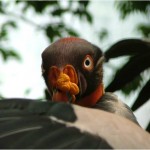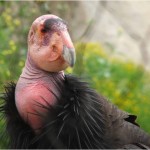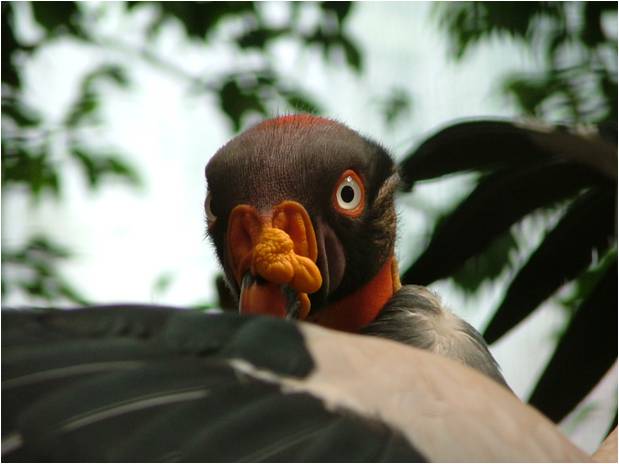 1 September marks International Vulture Awareness Day. Although sometimes regarded as ugly and gross, vultures play a most important role in keeping ecosystems healthy. They serve both a biological and cultural significance. Unfortunately, several species are under threat of extinction due to humans. And please believe me when I say, this is not a species that we can live without.
1 September marks International Vulture Awareness Day. Although sometimes regarded as ugly and gross, vultures play a most important role in keeping ecosystems healthy. They serve both a biological and cultural significance. Unfortunately, several species are under threat of extinction due to humans. And please believe me when I say, this is not a species that we can live without.
Collectively, there are 23 species of vultures that are classified into two groups: Old World Vultures and New World Vultures. Although all species are similar, these two groups actually belong to different families. There are 16 species of Old World vultures that inhabit Africa, Asia, and Europe. Individuals in this group belong to the Accipitridae family and are closely related to eagles, kites, and hawks. Vultures belonging to this family rely on excellent eyesight to locate dead and dying animals for food. The 7 species of New World Vultures can be found throughout the Americas and like storks are members of the Cathartidae family. In contrast to the Old World species, members of this family have an amazing sense of smell to locate food, having the ability to find their dinner up to several kilometers away. All species of vultures are shown to be very intelligent.
Regardless of family, all vultures play a significant role in keeping our ecosystem healthy and clean. Vultures do not hunt live prey, but act as scavengers feeding on the carcasses of dead animals. The acid in their stomachs is highly corrosive, facilitating the digestion of decomposing carcasses infected with diseases such as anthrax, cholera, botulinum toxin, and rabies that would be lethal to other scavengers. Despite first impressions, vultures are actually very hygienic animals. Featherless or lightly feathered heads and necks help to keep vultures clean as they feed.
scavengers feeding on the carcasses of dead animals. The acid in their stomachs is highly corrosive, facilitating the digestion of decomposing carcasses infected with diseases such as anthrax, cholera, botulinum toxin, and rabies that would be lethal to other scavengers. Despite first impressions, vultures are actually very hygienic animals. Featherless or lightly feathered heads and necks help to keep vultures clean as they feed.
Vultures inhabiting the Tibetan plateau serve a cultural significance. Environmental conditions do not allow for the Ground burial of family members, so they are “buried in the sky.” To allow a corpse to rest on top of the ground or inside a dwelling could allow for the transmission of disease. As part of this Sky burial a monk or rogypas prepares the body for jhator or ingestion by the birds. Although this may seem grotesque to some, this type of burial is thought to be an act of generosity, as even in death the deceased is able to give something back to other living creatures. In addition, this practice is not isolated to Tibet, but has been recorded in cultures throughout the world over the last 11,000 years.
You would think that a creature that disposes of rotting carcasses and thereby prevents the spread of deadly disease would be held in high regard, but sadly they are not. Intentional or unintentional human interference has pushed several vulture species to the brink of extinction. In the United States, the California condor is struggling to maintain a sustainable population as lead poisoning continues to be the main threat to its survival. Hunters using lead ammunition wound target species thus allowing them to die in a remote location. Condors feeding on the carcass ingest the lead shot and as a result are slowly poisoned to death. Similarly, it has been found that the use of Diclofenac, a pain killer for livestock and humans in India and Nepal, has caused thousands of vulture deaths. Recently, Diclofenac has been banned, but conservationists argue that it comes too late to allow for survival of vulture species decimated by its initial use. In African countries such as Kenya and Namibia, carcasses are laced with the extremely toxic carbamate pesticide Furadan by farmers targeting lions and other predatory species that they consider a threat to livestock and humans. Animals that ingest Furadan suffer horrible deaths and then themselves pose a health risk to other scavenger species that ingest their carcass perpetuating this deadly act.
 I happen to think that vultures are absolutely incredible. Unfortunately, around the world vultures are underappreciated and therefore under protected. Let us think about the tons of rotting, diseased flesh that vultures dispose of annually. Now imagine if humans had to do that same job. The cost alone would be astronomical! So please join me in showing some respect and compassion to the vulture not just on this day of awareness, but everyday.
I happen to think that vultures are absolutely incredible. Unfortunately, around the world vultures are underappreciated and therefore under protected. Let us think about the tons of rotting, diseased flesh that vultures dispose of annually. Now imagine if humans had to do that same job. The cost alone would be astronomical! So please join me in showing some respect and compassion to the vulture not just on this day of awareness, but everyday.
